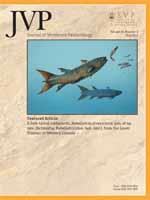Shape variation in the vertebrate skull is often studied by considering this bony structure as a single discrete unit, but it can also be interpreted exploring covariation among functionally and developmentally distinct regions, or modules. In this paper, we explore the evolution of skull shape in extant and fossil carnivoran cats by looking at covariation between two distinct modules: the rostrum (splanchnocranium) and braincase (neurocranium). Previous work suggests that the evolution of extreme skull shapes in sabertoothed cats may occur along developmental axes similar to the allometric trajectory observed for extant conical-toothed cats. Here, we reassess this hypothesis by using geometric morphometric data to test for covariation between rostral and braincase modules in sabertoothed and conical-toothed cats. Using partial least squares analysis, we detect a correlated pattern of evolution between rostrum and braincase shape in both forms. However, when we compare within-module integration between conical and sabertoothed cats, we find significant differences in vector trajectories for the rostrum but not the braincase. Both skull modules of conical-toothed cats are more influenced by allometry. For sabertoothed taxa, relative canine height drives shape in the rostrum, but both size and canine length affect braincase shape. We suggest that sabertoothed skull morphology is the result of genetic and developmental processes that were affected by the growth rate of the upper canines. The striking convergence between independent sabertooth radiations indicates that elongation of the canines influenced interspecific skull shape variation in different lineages but in a similar way.
How to translate text using browser tools
1 May 2012
Covariation in the Skull Modules of Cats: The Challenge of Growing Saber-Like Canines
Carlo Meloro,
Graham J. Slater
ACCESS THE FULL ARTICLE

Journal of Vertebrate Paleontology
Vol. 32 • No. 3
May 2012
Vol. 32 • No. 3
May 2012




